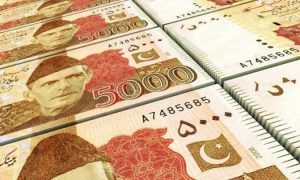In a move that might stoke the flames of inflation, the government is deliberating on raising the petroleum levy to a record Rs60 per litre on petroleum products. This initiative forms part of the government’s strategy to generate an estimated Rs2.9 trillion in non-tax revenues in the forthcoming financial year.
This proposition seeks to create extra fiscal room for increased spending, considering an expected 30% surge in expenses related to pension payments and operational costs of the civil government compared to this year’s original budget.
According to insider information, the Ministry of Finance has suggested a Rs10 per litre increase in the levy rate, aiming to amass around Rs870 billion from this channel during the fiscal year 2023-24. The current levy rate is Rs50 per litre.
Despite predictions of crude oil prices reaching $100 per barrel by the year’s end due to Saudi Arabia’s decision to cut production by 100,000 barrels per day, the Ministry of Finance remains committed to the levy increase. Petroleum prices are forecasted to remain high for the next fiscal year, with the central bank predicting an average exchange rate of Rs308 per dollar.
In the current fiscal year, the government had aimed to raise Rs855 billion via the petroleum levy. However, the actual collections in the first nine months have been disappointing, standing at Rs362 billion.
The profits of the State Bank of Pakistan (SBP) form another major non-tax revenue source. Inside sources indicate that the finance ministry now anticipates revenues from this category to touch Rs1.1 trillion, marking an increase from the earlier estimate of Rs920 billion.
The federal government retains all non-tax revenues, which are not divided among the provinces. It is leaning increasingly on these sources to cover its expenses. To achieve the target of Rs2.9 trillion in non-tax revenues for the upcoming fiscal year, the government may also consider alternative sources such as wealth tax and a windfall levy on banks, insiders suggest.
The target for non-tax revenues in the present fiscal year was Rs1.9 trillion.
Read More: Pakistan Approves Over PKR 402 Billion Supplementary Grant for External Debt Servicing
However, the government faces the challenge of devising creative ways to bolster tax collection, as internal politics obstruct the execution of recommendations from the Reform and Revenue Mobilisation Commission (RRMC). The RRMC report states that by implementing five measures, an additional Rs635 billion could be generated in the next fiscal year. One such measure involves eliminating the final tax regime for exporters, potentially generating Rs300 billion annually for the Federal Board of Revenue (FBR).
Currently, exporters fall under the Final Tax Regime, which exempts them from FBR audits. The RRMC suggests shifting exporters to the Minimum Tax Regime.
Increasing the income tax rate for the non-corporate sector could add another Rs150 billion in revenues, according to the RRMC report.
Containing expenditures remains a significant challenge for the government. The estimated pension expenses for the next fiscal year will be Rs780 billion, reflecting an increase of Rs172 billion or 28%. Similarly, the operational costs for the civil government are expected to rise by Rs167 billion or 30%, reaching Rs720 billion.
The budget deficit for fiscal year 2023-24, the difference between revenue and expenditure, is estimated to be approximately 7.4% of the GDP, equating to nearly Rs7.8 trillion.
The government has made minor adjustments to its earlier budget projections. The primary budget might have a slight surplus due to provincial cash surpluses, bringing the overall budget deficit to around 6.8% of the GDP or approximately Rs7.2 trillion.



























